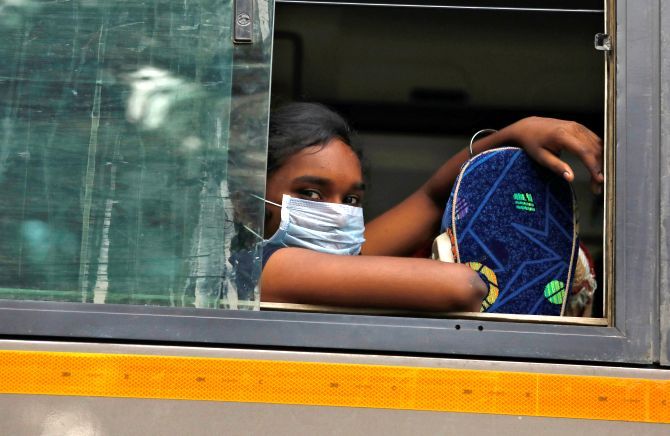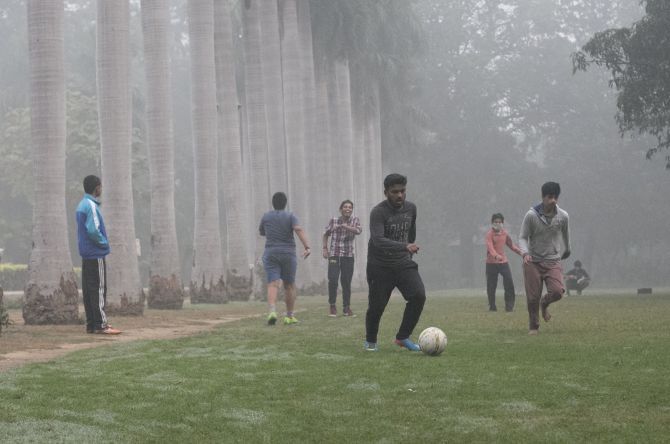 | « Back to article | Print this article |
Air quality in Delhi worsened on Monday and inched closer to the ‘severe’ category with a sharp rise in the level of particulates through the day, according to official data.

The spurt in pollutants was caused by a combination of meteorological factors including a drop in temperature, wind speed and mixing height, a layer where air and particulates float, the Central Pollution Control Board said.
Sri Lankan cricketers took to the field in New Delhi wearing anti-pollution masks.
The concentration of the most dominant pollutants, PM2.5 and PM10, reached levels as high as 276 and 455 microgram per cubic metre by 3 pm, according to the Central Control Room for Air Quality Management of the CPCB.
Pollution is considered severe plus or emergency when readings of PM2.5 and PM10 cross 300 and 500 ug/m3 respectively. The corresponding prescribed standards are 60
and 100.

According to data from CPCB’s air lab, mixing height, which was 527 metre in the last week of November, has dropped to 309 while wind speed has come down from 2.1 metres/second to 1 metre/sec.
Humidity has risen from 44.3 per cent to 51 per cent while average temperature has dipped by about two degree since November 27.
The Air Quality Index, as recorded by the Central Pollution Control Board, also reflected the rise in the levels of these ultrafine air-borne particulates, which manage to lodge deep in the lungs and even enter the bloodstream.
The average AQI for the entire city was 390, on a scale of 500. It is classified as ‘very poor’. However, it is menacingly close to the ‘severe’ category.
Sunday’s 24-hour average was 351.

However, nine out of CPCB’s 17 stations had ‘severe’ quality air by 7 pm. The rest was in the ‘very poor’ zone.
A ‘very poor’ AQI comes with the warning that people may develop respiratory illness on prolonged exposure while exposure to ‘severe’ air affects healthy people and seriously impacts those with existing respiratory or cardiovascular diseases.
Pollution levels in Delhi usually remain in the ‘very poor’ category during December.
November witnesses extremely high levels of pollution as smoke from paddy residue burning reaches the city, aggravating the situation.
However, there are phases, when such spikes are seen even during December and January, mostly due to rapid drop in temperature and high moisture content, factors that trap particulates near the surface.
According to an IIT-Kanpur study, the sources of PM2.5 and PM10 during the winter months are: secondary particles like nitrates (25-30 per cent), vehicles (20-25 per cent), biomass burning (17–26 per cent), municipal solid waste burning (9-8 per cent) and to a lesser extent soil and road dust.